#liselotte von der pfalz
Text
In an emergency, don't call your national emergency number, call Louis XIV:
From a letter by Elisabeth Charlotte "Liselotte" Duchess of Orléans, to her aunt Sophie von Hannover, dated 14 December 1676:

Translation:
Your Grace, who admires our King so greatly because he has done so well being by my side when I was in labour, will also love him on account of this tale, as he himself was the first to arrive by my side, as pale as death, and despite assuring him that I was neither hurt nor had I fallen on my head, he would not calm himself until he felt my head from all sides and found that what I had said was true; he personally led me to my chamber and remained with me for a long time to see whether I would not be a little dizzy.
Well, who would have thought Louis XIV would turn out to have been a supportive presence you'd want to have around while giving birth, or that he (in this instance at least) provided first aid for a presumed concussion that still stands the test of time?
Realisation of the Day:
Louis XIV would have done a better job treating my concussion from an accident a few years back than the 21st century hospital A&E did.
41 notes
·
View notes
Text

Elizabeth Charlotte of the Palatinate, Duchess of Orléans (1652-1722). By Pierre Mignard.
#pierre mignard#royaume de france#maison de bourbon#maison d'orléans#bourbon orleans#elizabeth charlotte of the palatinate#duchesse d'orléans#madame palatine#liselotte von der pfalz#house of wittelsbach#german aristocracy#haus wittelsbach#museo del prado
12 notes
·
View notes
Text
do you guys think Liselotte would call William's farts "the protestant wind"
3 notes
·
View notes
Text


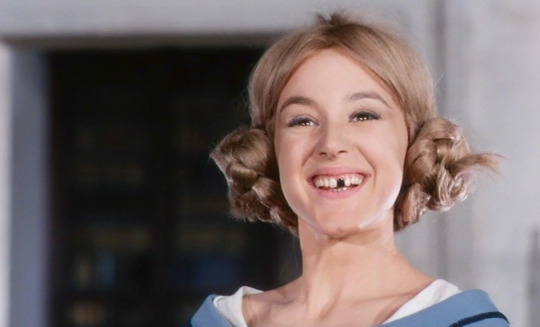
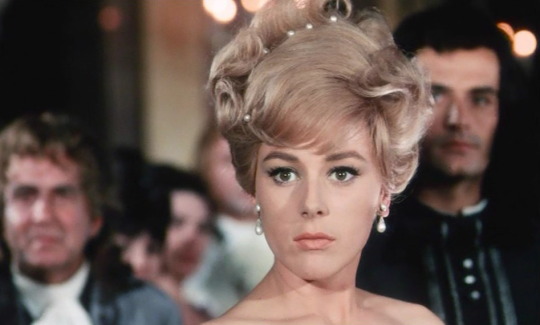
liselotte von der pfalz, kurt hoffmann 1966
1 note
·
View note
Note
Would you know anything about the bedbugs infestation in Paris ? Is it as bad as the media says it is ?
Thank you 😊
Dear (returning?) Paris Anon,
At least I suppose it's you. 'Bedbug Anon' was a bit cheeky, to be honest.
Well, yes. I do know a thing or two about it. I even just re-watched a very popular and well-informed French talk show (C dans l'air) which spoke at length about it on October 2 (suit yourself, if you understand French: https://www.youtube.com/watch?v=xKUizY5ek5A) - this explains my belated answer. It was, as usually, a most entertaining and insightful inquiry on what is now not only the latest wave of collective hysteria, but also a very serious political French affair (everything is political, in France).
For a more entertaining, yet alarming Anglo-Saxon POV, check The Cut's cheeky correspondence from Paris Fashion Week (https://www.thecut.com/2023/10/snug-as-a-bedbug-in-a-high-fashion-rug.html). I couldn't help but wonder if C dutifully left her suitcase outside or put her white Panda shirt in the freezer, just to be on the safe side, like all the American fashionistas recommended (see article above).
With French topics, I have a infallible rule of thumb: if it made it to the media, then it's bad enough and you should multiply the effect at least by 2, just to have an idea. It is a dire straits moment for France, when they are expecting to be submerged by hundreds of thousands of tourists, lured in by the Olympics: national pride is at stake. So this is why they invited an entomologist and two medical school professors at that talk-show: to explain the traumatized masses even Cleopatra had bed bugs (I kid you not and only in France) and that it has nothing to do with the lack of hygiene. Mysteriously, no other rationale was brought forth, but I would guess it has to do with the inflation of wallpaper that plagues all the bourgeois French apartments (those spaces perfectly fit to entertain people, but inept for comfortable living). Bed bugs just love wallpaper and upholstery, for some mystifying reason.
Since you asked at your own risk, I am afraid you have to put up with my logorrhea and allow me to shortly explain you something about French attitude to hygiene. Some people (Americans, especially) are horrified by what sometimes is a nonchalant approach to it, but I don't really mind and I don't find French people repugnant at all (God forbid!). But it is true that instead of 'cleanliness is next to godliness', French kids heard for centuries things like ' l'eau pique' (water stings). Jamie and Claire's Paris was not its lionized book and series avatar: it was a pigsty, where people routinely threw their chamber pots either in the Seine river or just haphazardly in the open street sewage running under their windows. So much so, that this is why the Sun King chose to flee from (bed bug) infested Louvre Palace and chose to repair and expand his father's old hunting lodge at Versailles, with the result we all know.
Not that Versailles was any better, hygiene-wise: Gabaldon's descriptions are correct, but they do not measure up with the brutal and hilarious honesty of the Princess Palatine. A rotund, plain but witty woman, Liselotte von der Pfalz (the sister-in law of the Sun King, no less) wrote (in French) absolutely wonderful letters to her German relatives. And I do remember howling when I happened to stumble upon things like : 'oh, in Versailles, just about everyone shits just about everywhere, without a single care in the world' (I am quoting from memory, but the idea is very accurate).
Along came two (contemporary) men. Louis Pasteur whose germ (Jamie's wee beasties) theory of diseases radically changed the public health game in France, aside from discovering the cure for rage. And the Baron Haussmann, who razed all the (bed bug) infested Medieval Paris neighborhoods, plus re-introduced underground sewage (tout à l'égoût) to France. And built many of the supremely elegant avenues and boulevards that are the real pride, joy and soul of that strange, annoying and beautiful city I deeply love and know like the back of my hand.
So you see, Anon, the pain, the shame and the struggle are real.
I hope I didn't make you dizzy. Don't forget to tell us if you liked Paris and don't be a stranger.

24 notes
·
View notes
Text

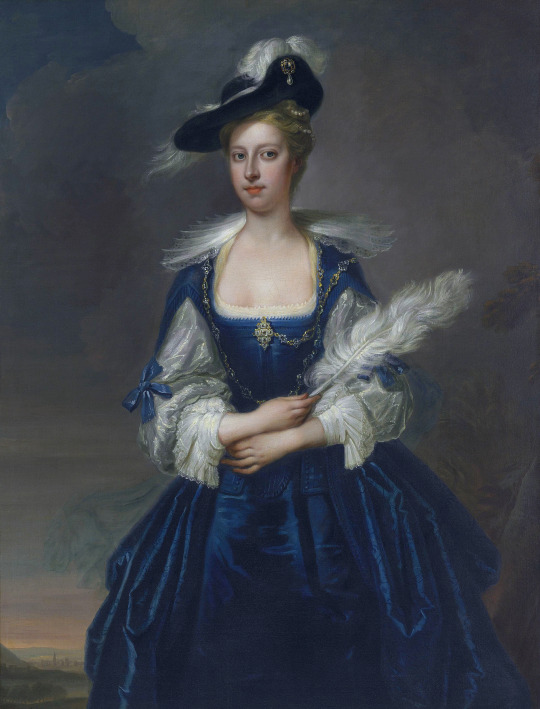
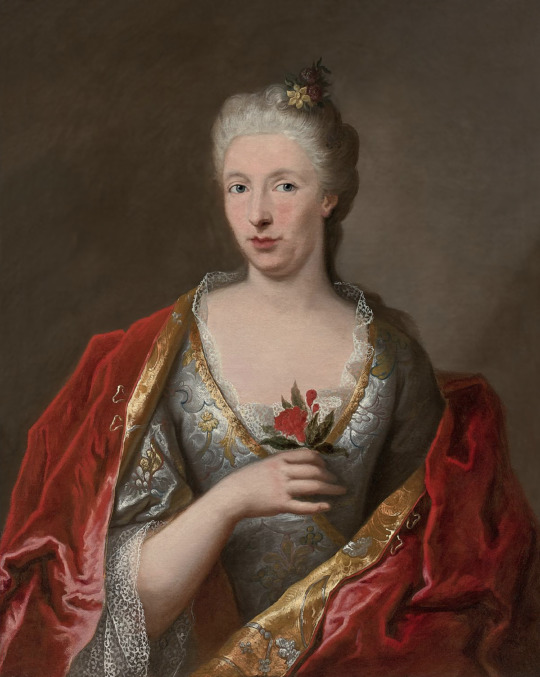
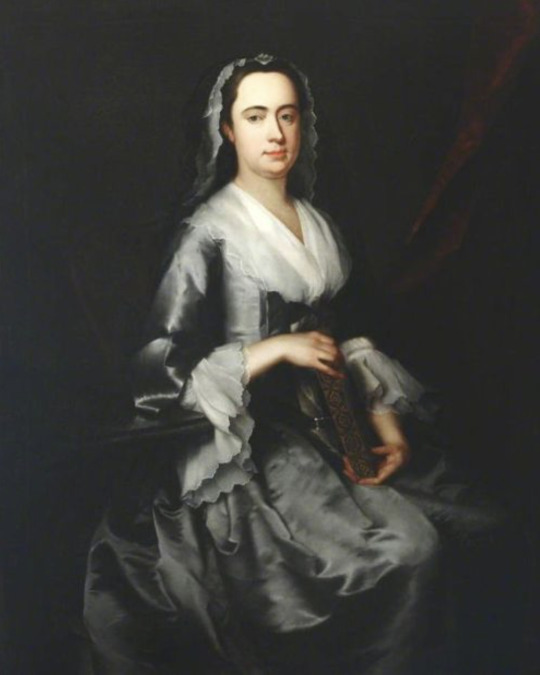
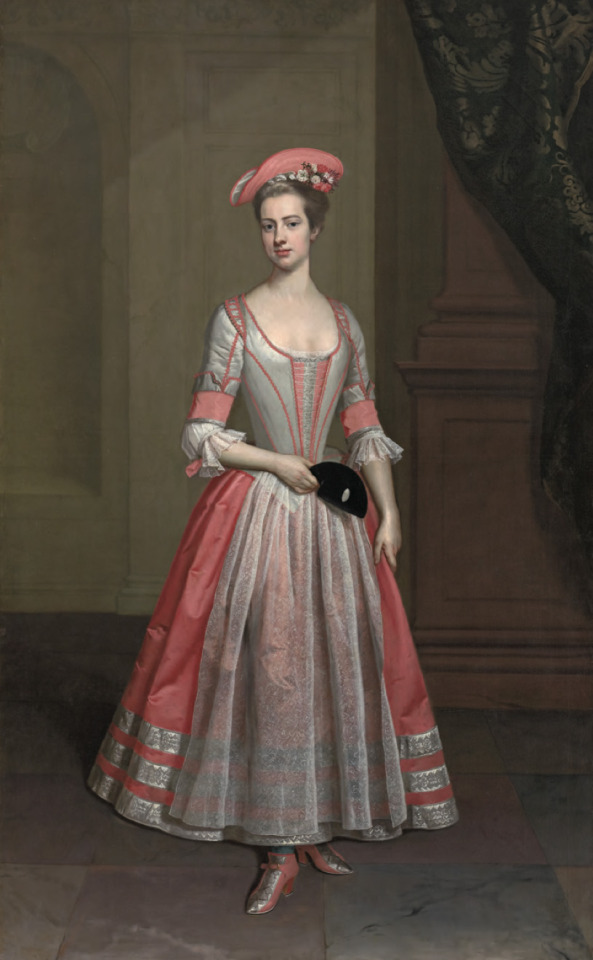
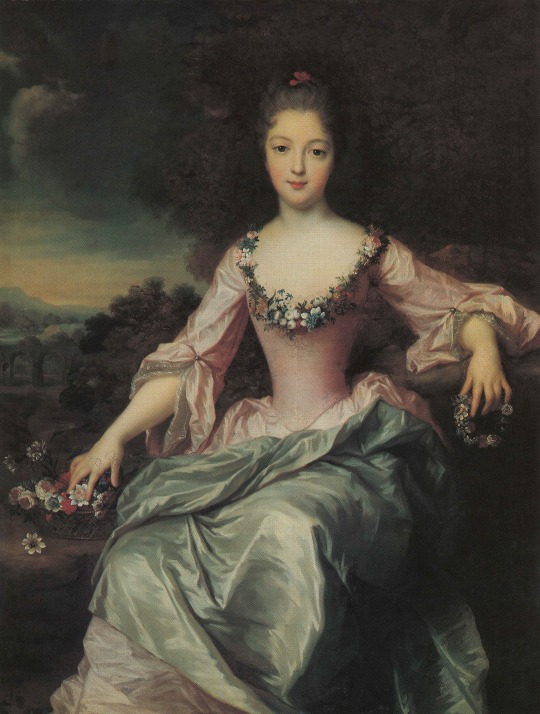

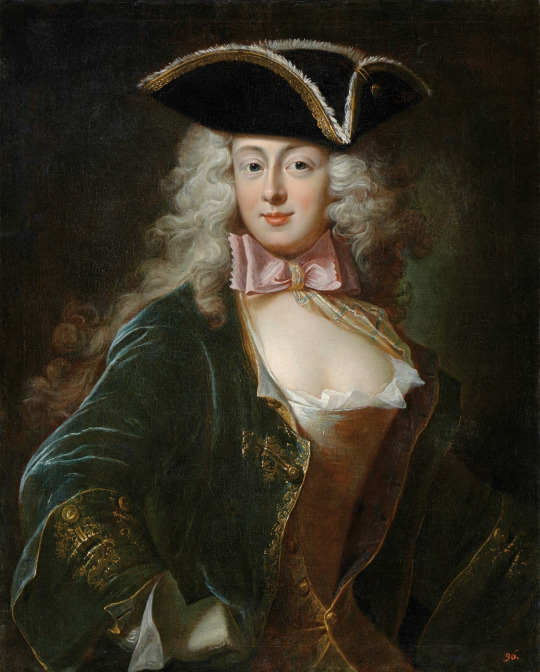

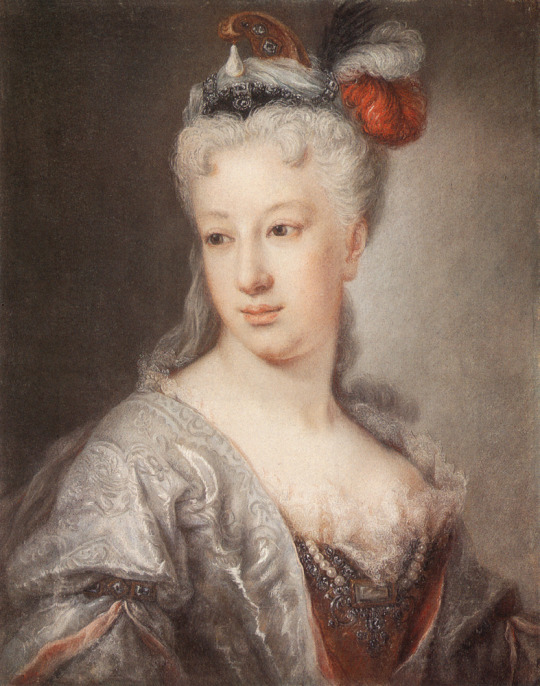

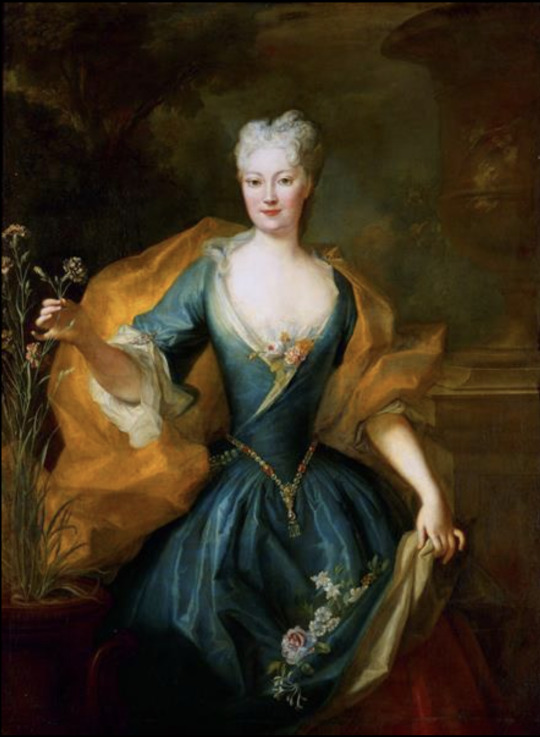

1720s dress -
Top left 1720 (probably) Princess Rakoczi by Nicolas de Largillierre (National Gallery - London, UK); From paintings-art-picture.com/paintings/archives/534/largilliere-nicolas-de-princess-rakoczi; removed spots throughout image and print in lower rt corner 152.0X2000.
Top right ca. 1720 (based on date of marriage) Elizabeth Dunch, later Lady Oxenden, by Thomas Hudson (auctioned by Christie’s). From their Web site; fixed obvious spots w Pshop 2449X3215.
Second row left ca. 1720 Dame dite madame Élisabeth Parisot by entourage of Jean-Baptiste Oudry (on auction by Tajan). From invaluable.com-auction-lot-ecole-francaise-vers-1720-entourage-de-jean-bapti-42-c-20e48bc868; fixed creases w Pshop 2990X3747.
Second row right ca. 1720 Mrs or Miss Mary Miller by the circle of Jonathan Richardson the elder (location ?). From titam.tumblr.com 1228X1536.
Third row ca. 1720 Henrietta Hobart, The Hon. Mrs Howard, later Countess of Suffolk, in a masquerade dress attributed to Thomas Gibson (Blickling Hall - Blickling, Norfolk, UK). From the National Trust's Blickling Hall Illustrated Picture List 816X1321.
Fourth row 1720 Marie Anne de Bourbon Condé by Gustaf Lundberg (auctioned by Nordén Auktioner). Probably from their Web site 3871X5117.
Fifth row 1721 Louise Anne de Bourbon, Mademoiselle de Charolais by Charles Antoine Coypel (location ?). From jeannedepompadour.blogspot.com/2012/03 820X1000.
Sixth rów left 1722 (before) Emerencjanna Pociej née Warszycka by Ádám Mányoki (Pałac Łazienkowski - Warszawa, Poland). From Wikimedia; too many flaws to fix 1608X2000.
Sixth row right 1722 Élisabeth-Charlotte d'Orléans, duchesse de Lorraine, avec son second fils François-Étienne par Alexis Simon Belle (location ?) From www.altesses.eu/princes290.php 823X1188.
Seventh row 1722 Marchesa Maria Guicciardini, née Rinuccini by Giovanna Fratellini (Galleria degli Uffizi - Firenze, Toscana, Italy). From www.pastellists.com; fixed left half of upper edge with Photoshop 787X1000.
Eighth row left 1723 Liselotte von der Pfalz by Hyacinthe Rigaud (auctioned by Tajan). Posted to Foro Dinastias by Minnie on 7 February 2010; removed flaws in background with Photoshop 614X1024.
Eighth row right 1724 Countess Karoline Friederike Lubomirska by Louis de Silvestre (private collection). From the-athenaeum.org 1768X2414.
Ninth row 1724 The Garter by Jean-François de Troy (location ?). From tumblr.com/catherinedefrance fixed obvious spots w Pshop 662X800.
#Princess Rakoczi#sucrcote#V waistline#Nicolas de Largillierre#1720s fashion#Rococo fashion#Louis XV fashion#Georgian fashion#Elizabeth Dunch#Thomas Hudson#ruff#Élisabeth Parisot#Jean-Baptiste Oudry#cross over bodice#Mary Miller#Jonathan Richardson the Elder#fichu#Henrietta Hobart#Thomas Gibson#apron#Marie Anne de Bourbon Condé#Gustaf Lundberg#Basque neckline#notched sleeves#Louise Anne de Bourbon#Charles Antoine Coypel#cap#fan#lace enggageantes#Emerencjanna Pociej
16 notes
·
View notes
Text
Maybe an unpopular opinion but I wish they would finally stop only making movies and series of the tragic life of Sisi (Empress Elizabeth in Bavaria) and look for other interesting royal German/ Austrian or German speaking ladies/ queens like for example Queen Luise of Prussia (and her sister Charlotte, both being from the house of the dukes of Mecklenburg-Strelitz and having very interesting lifes) or Isabelle/ Elisabeth, called "Isabeau de Bavière" (from the House of Wittelsbach-Ingolstadt), wife of the so called mad French King Charles VI, mother of King Charles VII and Queen Catherine of England (first wife of Henry V of England, then married to Owen Tudor and mother of Henry VI).
Or St. Elizabeth of Thuringia/ Hungary who lived a life for the poor after she lost her husband, Ludwig/ Louis IV, the landgrave of Thuringia, in the 6th crusade (1227) and is among the most renowned Catholic saints.
I would also name Catherine the Great of Russia (Sophie of Anhalt-Zerbst) but there is a Russian series about her life and the one with Helen Mirren.
Then the famous St. Hildegard of Bingen, a famous and influential woman of the Middle Ages to this day in so many ways. Yes, there was a German movie about her some years ago but I don't think that it is widely known.
Then "Liselotte von der Pfalz" as Germans do call her, the Madame Palatine, wife of Philippe of Orlèans, brother of King Louis XIV aka the "sun king". She wrote a tremendous amont of letters in her life, leaving behind so much information about the court of the "sun king" that historians can only be thankful to her. Yes, there was the series "Versailles" but that wasn't quite an accurate one.
At least Maria Theresia of Austria, mother of Queen Marie Antoinette and King Joseph II got a series some years ago, cause let us face it, that woman was a great one. As a child it always impressed me wildly how many children she and Luise of Prussia got. It seemed insane to me.
With this I want to say: There is more got stuff about great German/ Austrian/ German speaking ladies out there. Wayyyy more.
And it angers me that it does not get depicted.
Only our tragic or as "weak/ bad" considered ladies do get some recognition like Sisi, Marie Antoinette or Tsarina Alice of Hesse. That is sad.
https://en.m.wikipedia.org/wiki/Isabeau_of_Bavaria
https://en.m.wikipedia.org/wiki/Elizabeth_of_Hungary
#the empress#elizabeth of austria#empress sisi#luise of prussia#charlotte of prussia#st. elizabeth of thuringia#st.elizabeth of hungary#isabeau de bavière#catherine the great
20 notes
·
View notes
Text
you know who needs her own period drama. liselotte von der pfalz.
3 notes
·
View notes
Text
Me: *clutching Chevlotte to my chest*
My brain: Axel! Put. The historical anachronism. Down.
Me: No! I love them!
My brain: LISELOTTE VON DER PFALZ IS ROLLING IN HER GRAVE, AXEL!
4 notes
·
View notes
Text
Elizabeth ' Bettie ' Pollard and Elisabeth Charlotte ' Liselotte ' von der Pfalz d'Orléans.
Two ladies with the same first names and both as different as the fourth letters - - -

Eli-z-abeth ; sharp and angular and has the studied Pollard tongue that can stab as sharply as those angles in the letter--

Eli-s-abeth ; just as smart and well spoken but softer like the comfortable curves of the letter--
#muse;[liselotte]#muse;[bettie]#i love them...#i wanted this to be more insightful but?? brickwork for another time atleast
1 note
·
View note
Text
Interview with a Ghost, or: Royal Ghost Hunters

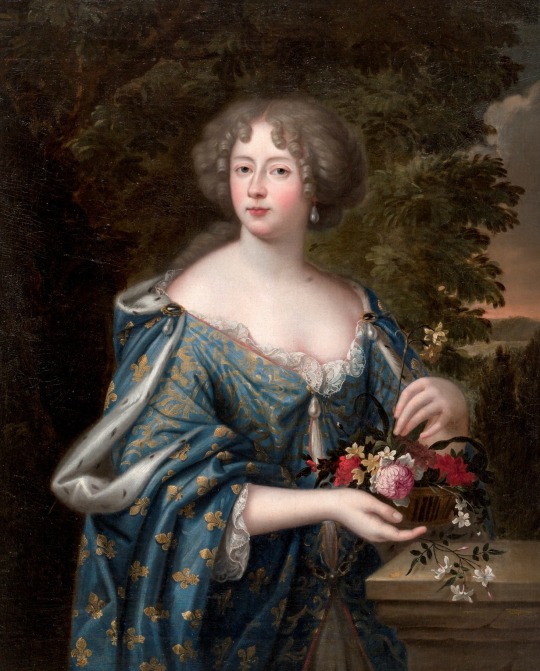

Left to right: ghost hunters Karl Ludwig I. Elector Palatine (1617–1680), his daughter Liselotte von der Pfalz, Duchess of Orleáns (1652–1722), and Friedrich Wilhelm I., King in Prussia (1688–1740).
Since it’s Halloween, I thought I should make a themed post! And what better topic to choose than ghosts? But more often than not, these restless souls wandering between the worlds, preferably at night, are of an entirely earthly origin— especially when bedsheets are involved.
Haunted more by a family history of trouble and turmoil than actual ghosts, let’s look at three Stuart descendants and their brush with the allegedly supernatural:
Karl Ludwig, Elector Palatine and the Ghost of Chain Alley
This first story of a successful ghost hunt concerns Karl Ludwig, Elector Palatine, and was passed from Liselotte von der Pfalz to her much younger half-sister Luise on 22 February 1721.
Zu Heidelberg, ehe Ihr geboren, wurd ein groß Geschrei von einem Gespenst, so alle Nacht mit feurigen Augen und großem Geplärr durch die Kettengaß ging. Ihro Gnaden, der Kurfürst, unser Herr Vater, ließ dem Gespenst aufpassen und fangen; da ertappte man drei oder vier Studenten, so Franzosen waren. — Einer, so Beauregard hieß und des Generals Balthasar Schwager war, der war das Kalb, und die andern, ich glaube Monsieur Dangeaus Bruder, Coursillon, so jetzt Abbé ist, halfen zu der Musik. Wenn man die Gespenster genau examiniert, kommt als so was heraus.
From: Künzel, C. [Ed.], Die Briefe der Liselotte. Liselotte von der Pfalz, Herzogin von Orleans, München 1923, p. 442.
Translation:
[…] At Heidelberg, ere you were born, there was great upheaval on account of a ghost, which would go through the Kettengasse [literal translation: Chain Alley] each night with fiery eyes and a great clamour. His Grace the Elector our father had the ghost waylaid and captured; they caught four students, who were Frenchmen. – One of them by the name of Beauregard was the brother-in-law of General Balthasar, was the calf and the others, I believe the brother of Monsieur Dangeau, Coursillon, who is an abbé [abbot] now [among them], helped make the music. If only you examine ghosts closely, that’s what you’ll uncover.

The location of the Kettengasse in Heidelberg, via Google Maps. Conspicuously close to university buildings, it probably was not hard to guess that the ghost was a student hoax.
The Ghost of the Poisoned Princess: Liselotte Investigates

Henrietta Anne (1644–1670), first wife of Philippe, Duke of Orléans in a posthumous portrait by Peter Lely, and rather fittingly dressed in a white gown.
As can be seen from the story relayed to her half-sister, her father's no-nonsensical attitude set the tone for Liselotte’s own approach to ghostly apparitions— some stories, such as the ghost wandering the conspicuously aptly named Kettengasse, just seem too good to be true.
While not directly involved in the ghost hunt itself, Liselotte, a no-nonsensical person who did not believe in organised religion at large and superstition in particular, remained unphased when a ghostly apparition quickly identified as the wronged and restless soul of her husband’s first wife Henrietta Anne of England started to appear on occasion in a specific spot in the gardens of her residence, Saint Cloud palace. Liselotte, while occasionally chiming in on the rumours that Henrietta Anne may have been poisoned by the Chevalier de Lorraine, her husband’s favourite and her personal arch-nemesis, would have nothing of it and even interviewed the ghost in person:
Es gieng vor vielen Jahren ein Geschrey zu St. Cloud, daß feue Madame Geist im Garten bei einem Brunnen gienge, wo sie sich in der größten Hitze aufgehalten, den der Ort ist sehr kühl. Als des Marêchal de Clerembeaut Lakey Abends wie die Sonne untergegangen war, an dem Brunnen gieng Wasser zu schöpfen, sahe er etwas weisses an dem Brunnen sitzen ohne Figur, das stehet gegen ihm auf, und wird noch einmal so groß; der arme Lakey erschrack und lief weg, wie er aber weiter kam, sagte er: er hätte Madame gesehen, wurde tod krank und starb, der aber damals Capitaine du Chateau war, und wohl denken konnte, daß man dahinter stecken müste, gieng etliche Tage nachher auch zu dem Brunnen, und wie er das Gespenst gehen sahe, drohete er dem Gespenst 100 Prügel zu geben, wofern es nicht sagte, wer es wäre. Das Gespenst sagte: ah! Monsieur de Lastera, ne me faites point de mal, je suis la pauvre Philippinette. Diese war ein alt Weib aus dem Dorfe von 77 Jahren, die keinen Zahn mehr im Maule hatte und böse Augen, einen feuerroten Bord darum, ein groß Maul, eine große Nase; Summa se war abscheulich. Man wollte sie in ein Gefängnis führen, ich bat aber für sie. Sie kam mir zu danken; ich sagte: quelle rage Vous tient de faire l’esprit au lieu de Vous aller coucher? Sie fieng an zu lachen und sagte: je ne puis avoir regret à ce que j’ai fait; à mon âge on dort peu. Il faut bien avoir quelque petite chose pour reveiller l’esprit. Tout ce que j’ai fait dans ma jeunesse ne m’a tant rejouï, que de faire l’ésprit. J’étois bien sure, que ceux qui n’auroient pas peur de mon drap bla[n]c, auroient peur de mon visage. Ceux qui avoient peur, faisoient tant de grimaces, que j’en mourrois de rire. Ce Plaisir nocturne me payoit de la peine d’avoir porté la hotte toute la journée. Den 17ten Novembr. 1716.
From: Veltenheim, August F. von [Ed.], Anekdoten vom Französischen Hofe vorzüglich aus den Zeiten Ludewigs des XIV. und des Duc Regent: aus Briefen der Madame d'Orleans Charlotte Elisabeth, Herzog Philipp I. von Orleans Witwe Welchen noch ein Versuch über die Masque de Fer beigefügt ist, Strassbourg 1789, p. 291 f.
Translation:
Many years ago at St. Cloud, there was a rumour that the ghost of the late Madame [Henrietta Maria of England, first wife of Philippe d’Orléans] was pacing beside a well where she had dwelt in the greatest heat, because this place is exceedingly cool. When a lackey of the Marshal de Clerembeaut went to the well one evening to draw water, he saw something white and shapeless sit beside the well, which, facing him, rose and doubled in size; the poor lackey was startled and ran away, and as he got away, said that he had seen Madame, [then] fell fatally ill and died. But the person who was Capitaine du chateau [steward of the palace] at the time, having decided that one should ascertain what was behind all this, afterwards went to the well for several days as well, and upon seeing the ghost, threatened them with 100 lashes if they would not tell him who they were.
The ghost said: “Ah! Monsieur de Lastera, do me no harm, I am the poor Philippinette.” She was an old woman from the village who was 77 years old and had not a tooth left in her mouth and bloodshot eyes with red circles around them with a big mouth and a big nose and was therefore, all things considered, hideous.
They wanted to take her to prison, but I interceded on her behalf. She came to thank me; I said: “What came over you to try and be funny instead of going to sleep?”
She started to laugh and said: “I cannot regret what I have done; at my age, one sleeps little. One has to have a little something to raise one’s spirits. Everything that I have done in my youth has not delighted me as much as playing the spirit. I was quite certain that those who would not be afraid of my white sheet would be afraid of my face. Those who were afraid made such grimaces that I was dying of laughter. This nocturnal pleasure repaid me for the strain of having carried the hood all day.”
17 November 1716.
It's quite telling that she's punning on the phrase faire de l'ésprit, i.e. trying to be witty or funny (with ésprit also meaning spirit). Clearly, she was more amused than annoyed by Philippinette's prank, which stands in stark contrast to the next ghost hunter:
Friedrich Wilhelm I. in Prussia vs. 3 (!) White Ladies
Skipping a few generations down the family tree to the grandson of Liselotte’s favourite aunt Sophie von Hannover, for Friedrich Wilhelm, father of Frederick the Great, King in Prussia, the ghostly appearance of a woman in white announcing his father’s death in 1713 was less accidental than expected. Since generations, it was rumoured that the apparition of the ghostly figure known as the White Lady announced the death of a member of the Hohenzollern family. To name but some of the most prominent recent deaths in the family, the White Lady was rumoured to have been spotted just before the death of his grandmother Louise Henriette of Orange in 1667, grandfather Elector Friedrich Wilhelm in 1688 and their infant son Wilhelm Heinrich in 1649.
The ghost known as the White Lady was long rumoured to have been the unhappy ghost of a woman called Kunigunde von Orlamünde, a 14th century widowed noblewoman who was said to have fallen in love with a much younger man and member of the Hohenzollern family, Albrecht der Schöne [Albrecht the Beautiful]. Albrecht, or so the story goes, wanted to marry her, but faced fierce opposition from his parents, prompting him to say that four eyes stood in the way of their happiness. Kunigunde, misinterpreting her lover’s words, proceeded to murder her two children from her first marriage, thinking they were the two pairs of eyes Albrecht had alluded to. Having murdered her children, the penitent, lovestruck Kunigunde supposedly attached herself permanently to Albrecht’s family after her death. Research done in the 19th century however reveals that Kunigunde was childless, and that her only relationship with Albrecht was one of business, having bought land from him on which she built Himmelthron abbey, as whose abbess she died in 1382.
Another possible inspiration for the White Lady, particularly when seen in the Stadtschloss in Berlin, was Anna von Sydow, mistress of Elector Joachim II of Brandenburg (1505–1571), who died unhappily after having been incarcerated by her lover’s son and successor, to whom she is said to have appeared in her ghostly form to announce his approaching passing.

Epitaph of Kunigunde von Orlamünde as abbess of Himmelthron and a portrait said to depict Anna von Sydow, two women whose names are tethered to the myth of the White Lady of the Hohenzollern family.
Whether there is one definitive inspiration for the White Lady or not, the apparition visiting Friedrich I. on his deathbed was however of an altogether worldlier nature; this White Lady’s name was Sophie Luise zu Mecklenburg-Schwerin— and Friedrich’s third wife.

Friedrich I., King in Prussia.
For some time prior to Friedrich’s death, Sophie Luise’s mental health had deteriorated to such a degree that the Queen was considered insane by contemporaries. What had initially begun with a journey to finding personal religious fulfilment in Pietism and fights with Friedrich over which (Protestant, naturally) denomination was the ‘right’ one, developed into depression and at last, periods of aberration and complete disconnect from the world around her, prompting Friedrich to seek at least spatial separation from her.
One night in the months leading up to his death, Friedrich awoke in his chamber in the Stadtschloss to find a woman with loose hair dressed in nothing but her white, bloodied nightclothes standing over him, and addressing him with reproaches. The King, naturally frightened and thinking the White Lady herself had come to take him away screamed, alerting his household. The attendants thus alarmed and rushing to the scene quickly identified the intruder as none other but the Queen, who had escaped from her quarters.
Wholly unaware of what she had done when asked about the incident later, Sophie Luise had broken a glass door on the way to her husband’s quarters and cut herself on the shards, causing the blood stains on her clothing.

Sophie Luise von Mecklenburg-Schwerin, Queen in Prussia (1685–1735).
No longer tenable at the Prussian court after this episode, Sophie Luise, presumably by the authority of the Crown Prince Friedrich Wilhelm, was sent back to Mecklenburg to live with her mother mere weeks before her husband died; but Sophie Luise’s departure did not mean that Friedrich Wilhelm had put an end to the White Lady for good.
Reports are somewhat murky, but there appear to have been several other, less tragically accidental and decidedly more mean-spirited White Ladies in 1713 Berlin following the death of Friedrich I., which prompted the newly-minted Friedrich Wilhelm I. to act and, hopefully once and for all, banish the White Lady to the realm of legends.
Two men were put into the stocks and (accounts vary here) possibly whipped, one of them a young kitchen hand and the other a soldier. Either they were two genuine pranksters caught red-handed (or rather, white-gowned) in the streets of Berlin, or Friedrich Wilhelm had the men selected at random to make an example of two people he considered expendable to deter any would-be White Ladies.
Whatever the new King’s motivations, there are no reports of the ‘real’ White Lady having visited Friedrich Wilhelm at his own death in 1740; so it worked— at least for a while. By the end of the century, the White Lady was back with the Hohenzollern family and according to legend, even took it upon herself to chill the bones of Napoleon when he visited Bayreuth Palace, associated with the Hohenzollerns, in 1812.
Reports of the White Lady continue into the 20th century; she was last sighted on 31 January 1945 in Berlin, three days before the Stadtschloss was reduced to rubble under allied bombardments.
Perhaps, with the rightfully controversial reconstruction of the Stadtschloss (not to speak of the museum housed within, but I digress) over the last few years, she will return, her old haunting-grounds having been restored?
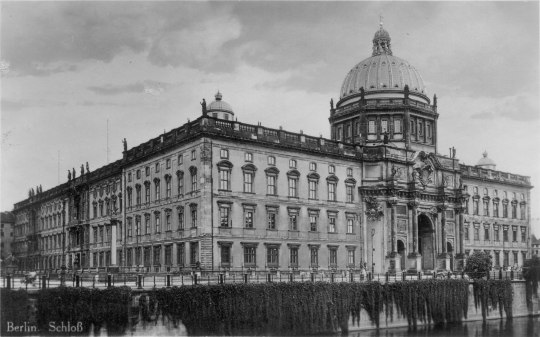
Photo of the north-eastern front of the Stadtschloss in the 1920s.

Photo of the north-eastern front of the Stadtschloss of September 2022, by Frank Schulenburg.
At present, it does not look like it. When Prinz Ferfried von Hohenzollern died about a month ago, there were no reports of the White Lady having made an appearance. But who knows? Perhaps on a dark autumnal night, as the street lanterns cast a sparse glimmer over the river Spree, and not a light shines from the windows of the new Stadtschloss, you might be (un-)lucky enough to spy her...?
...But always remember that if you do, you're most likely to have encountered a modern-day Philippinette.
Happy Halloween, everyone!
#halloween#spooky season#history#17th century#18th century#ghost stories#ghosts#weiße frau#white lady#karl ludwig von der pfalz#liselotte#liselotte von der pfalz#friedrich wilhelm i#friedrich i#sophie luise von mecklenburg-schwerin#kunigunde von orlamünde#anna von sydow#saint cloud#berlin#stadtschloss#myths and legends#german history#french history#my history posts
71 notes
·
View notes
Text
¬ Liselotte von der Pfalz and her many letters ¬
¬ A little insight and an English translation of myself from the book, Liselotte von der Pfalz : A life at the court Ludwigs XIV (Biographies, German Edition) ¬
At the French court, Liselotte became acquainted with some strange habits that she had not previously dreamed of. In consequences for the condition of the ladies and gentlemen.
Astonished, Liselotte wrote to Aunt Sophie on February 5, 1672: "It is not that I no longer walk here or stronger than I used to do. But the people here are as lame as geese, I don't know anyone who can take 20 steps without sweating and gasping."

6 notes
·
View notes
Text

5 notes
·
View notes
Photo
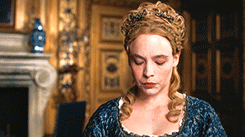



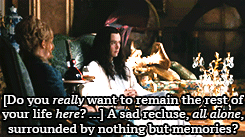
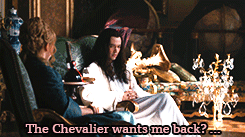



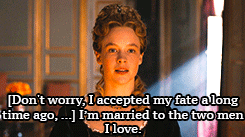
King Louis The Great (XIV)/François de La Rochefoucauld vs. Princess QUEEN ‘Liselotte’ Palatine and her husbands* - saving one of their lives, restoring the other’s sense of belonging, and defiantly securing her own - in “The Legacy”
Bonus:
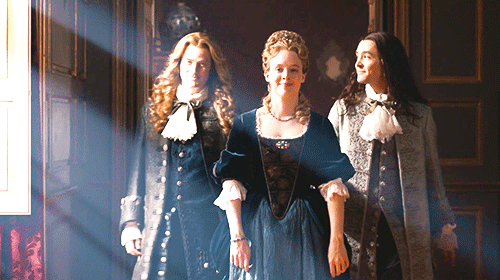
#versailles#monchelotte#monchevy#madame palatine#monsieur philippe d'orléans#chevalier de lorraine#princess palatine#prince philippe#elisabeth charlotte 'liselotte' palatine#duke of orléans#elisabeth charlotte palatine#liselotte palatine#liselotte von der pfalz#philippe d'orléans#philippe i#philippe de lorraine#louis xiv#françois de la rochefoucauld#scarron#françoise d'aubigné#marquise de maintenon#philippe to the 2nd#philippe x lorraine#philippexlorraine#philippelorraine#lorraine x philippe#lorrainexphilippe#lorrainephilippe#gif
746 notes
·
View notes
Text

Liselotte von der Pfalz’s Letters
Saint Germain, Feb. 3rd, 1672.
Madame de Wurtemburg spoke the truth when she described my grief to Dorndorf. I cried all night from Strasbourg to Chalons. I showed myself far more indifferent than I really was in feeling. I cannot forgive myself for the manner with which I parted from my relatives in Strasbourg.
I will tell you one thing about Monsieur: he is the best man in the world, and we get on very well together. None of his portraits resembled him in the least.”
Upon the birth of her son she wrote to a Madame von Harling:
“July 6th, 1673.
I often think of the joy you must have felt on being told of my safe deliverance of a boy. As I have always been like your own child, it is as though you had heard of the birth of a grandson. I feel sure that he has your heartiest good wishes. As soon as he has had his portrait taken I will send it to you, but I hope that you will see him some day and find him all that you could wish. Thank God he is a fine and healthy child, and has been so since the day of his birth. His size and beauty give me great pleasure.”
However, the child did not live to see his third birthday, and she wrote to the same Madame von Harlin of her grief.
“April 20th, 1676.
The terrible blow with which the Almighty has seen fit to overwhelm me so troubled me that I was not able to answer your letter before. You see now how right I was in wishing that my children could be under your care; I always foresaw what would happen to me. They manage children in the strangest way in this country Unfortunately 1 know nothing about them, never having had any experience, so I am obliged to do what they tell me. The more I think of this, the more wretched I become. I am now quite alone in my grief, for Monsieur started last Thursday with the King to join the army. I fear that all this will injure the child I am awaiting. … I do not think that grief can kill—were it so I should certainly have died before now. I cannot describe to you the terrible sufferings I have endured.”
2 notes
·
View notes
Text
Monsieur always brought to bed a rosary with holy medals, in order to be blessed with children. His wife, Liselotte could hear the rattling of medals under the blankets, as she mentioned in her memoir. She saw that the rosary and the holy metals were hung over her husband’s private parts.
9 notes
·
View notes